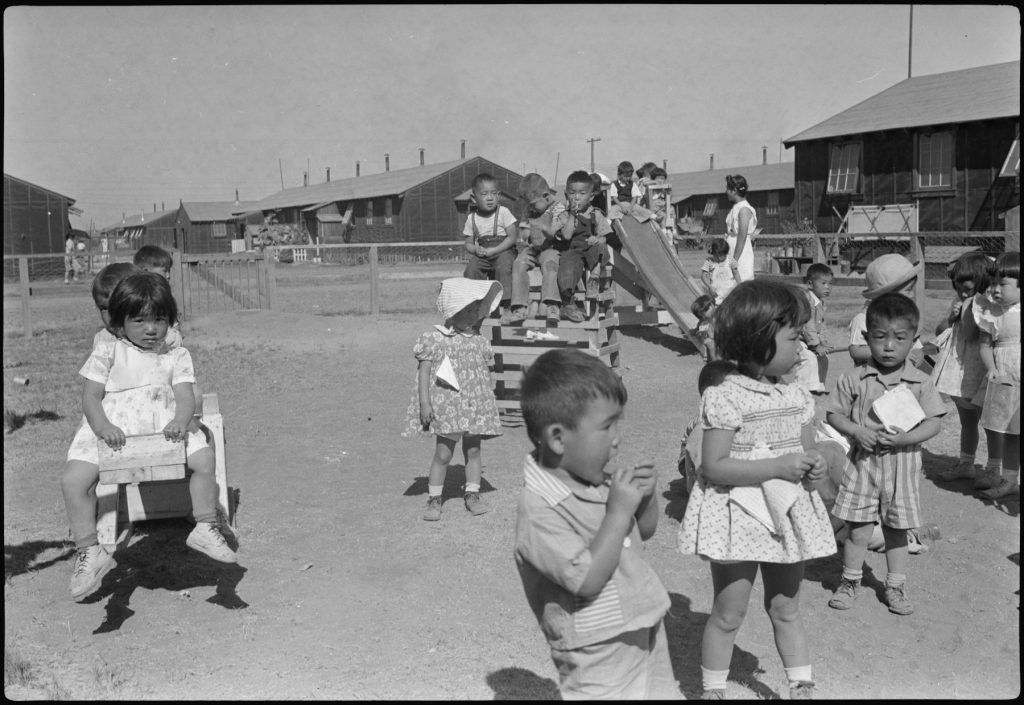
I’ll be honest, when I first heard that the ICE immigrant family detention centers full of Central American refugee kids and moms had animal-themed cell blocks like red bird and blue butterfly, I imagined they were using Eric Carle drawings, and I got a dark, blogging thrill.
But no. The South Texas Residential Center in Dilley, the largest family detention center in the world, run by the for-profit prison contractor, Corrections Corporation of America, was too cheap to license Carle’s work, and just used random clip art instead.

Also, the government’s punitive detention of these people is shameful, and it can’t end soon enough. Most of these families are fleeing war, violence, and abuse in their home countries and have already qualified for refugee hearings the US, but remain in these remote prisons, guarded by actual prison guards, temping in khakis and polo shirts, as a feeble deterrent to other refugees.

I resisted comparing ICE’s outsourced prisons to the desert detention centers Japanese-American families were forced into during WWII, even when I saw Bob Owen’s photo in the San Antonio Express News, which is a damningly straight-up evocation of Dorothea Lange’s photos of the War Relocation Authority’s internment camp at Manzanar, California.

Ansel Adams also took photos at Manzanar, which he published in a book, Born Free And Equal, alongside a text that reads today as disturbingly upbeat in its praise of the gumption and loyalty of American citizens forced into desert prisons. I’ve always viewed Adams’ project as a protest, a condemnation of the injustice visited upon Americans because of the racist fears of their neighbors and political leaders. But that is over-optimistic hindsight. Re-reading Adams’ text now is pretty depressing. To think that it’s all the Constitution and fundamental principle that wartime white America could handle at the time.

At least it helps make sense for how this country could get so cross-wise with its own professed ideals today; we really have not changed that much at all. And when I tried to put some evolved distance between the ironies of Adams’ treacly government-reviewed-and-approved fluffing and this account from inside Dilley, I couldn’t. So here it is:
While children wait for their mothers to talk to lawyers and legal aids, they are usually watching kids’ movies dubbed in Spanish, namely Rio or Frozen. The children of Dilley, like children everywhere, have taken to singing Frozen’s iconic song “Let It Go.”The Spanish-language refrain to the song “Libre soy! Libre soy!” translates to “I am free! I am free!” It’s an irony that makes the adults of Dilley uneasy. Mehta recalls one mother responding to her singing child under her breath: “Pero no lo somos” (But we aren’t).
Do you know the chorus of “Let it Go” in Spanish? I did not, but it is one helluva song for kids to be singing in a corporate prison in 2015:
Libre soy, libre soy
No puedo ocultarlo más
Libre soy, libre soy
Libertad sin vuelta atrás
Y firme así me quedo aquí
Libre soy, libre soy
El frío es parte también de míI am free, I am free
I can’t hide it anymore
I am free, I am free
Freedom without turning back
And I’m staying here, firm like this
I am free, I am free
The cold is also a part of me
‘Drink more water’: Horror stories from the medical ward of a Texas immigration detention center [fusion.net]
which is basically a re-reporting of this: Immigrant families in detention: A look inside one holding center [latimes]
Ansel Adams, Born Free And Equal, 1944 [loc.gov]
Related: Translating “Frozen” into Arabic [newyorker]
“Let it Go” in 25 languages [youtube]
[Originally published on Daddy Types on July 23, 2015 as Libre Soy, Libre Soy]










My grandfather was a teacher in central Utah and volunteered to help teach the children there. He was appalled that these good people were interned (imprisoned) and admired them for how hard working and intelligent they were, and also for the patriotism to put up with this. I never knew this until I read his journal after he passed.
Ironically, he was a German immigrant whose travel to America was sponsored and encouraged by his Jewish employers who seeing the infant Nazi movement told him that if they were his age they would go to America.
They lent him the money on his word that he’d pay them back, which he did. I don’t know what happened to them.
Back to Topaz, that place is literally in the middle of nowhere desert.
[Originally published on Daddy Types on March 29, 2013, as Topaz Mountain Sleds by Dave Tatsuno and Bill Fujita, with a relevant comment included here.]